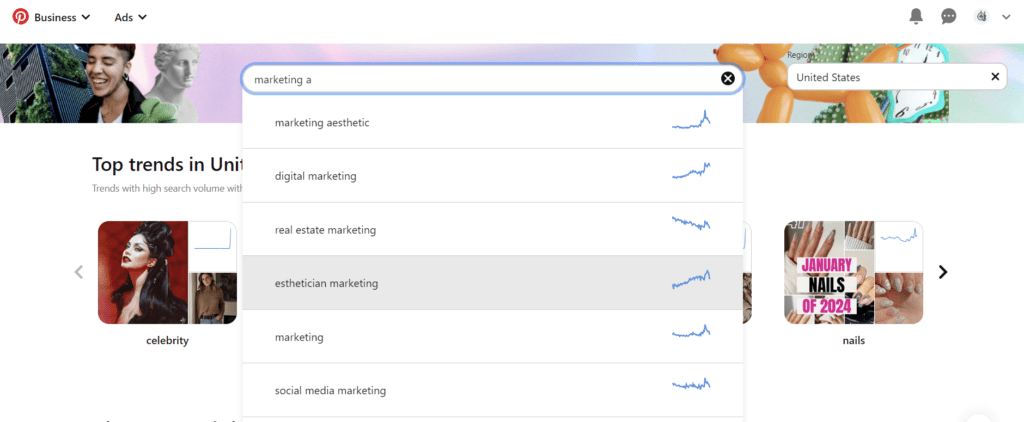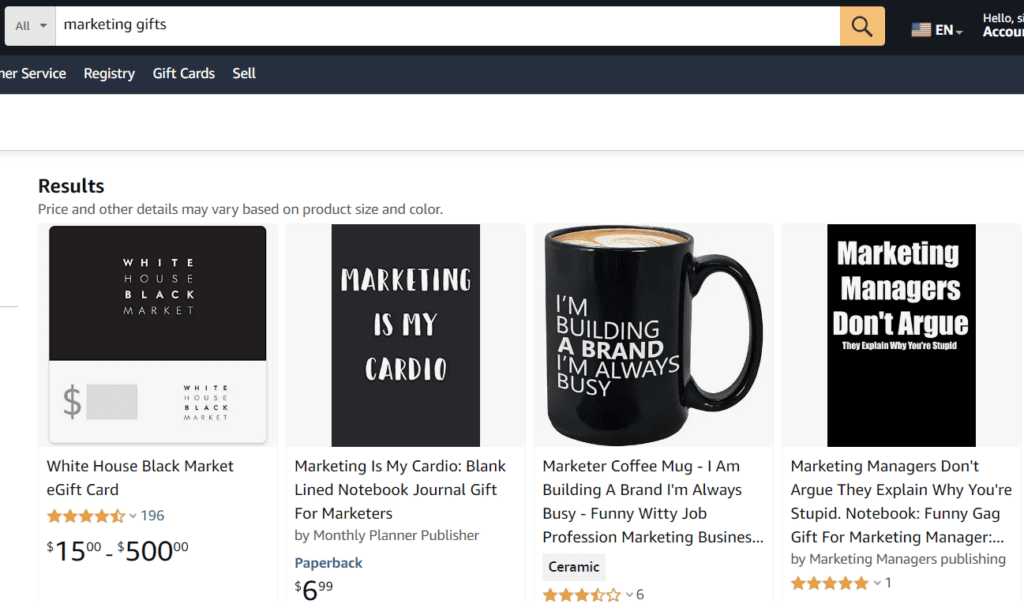You do not need millions of followers on your Pinterest account to use it for Amazon affiliate marketing. And, yes, you can do it as a complete beginner. All you need is a commitment and dedication to optimizing your Pinterest account and finding a niche with less competition and more possibilities for income.
At the end of this article, you will be equipped with all the necessary tools and knowledge on how to use Pinterest for Amazon affiliate marketing. You will be a Pinterest influencer with several avenues for generating income through Amazon. Let’s start our journey.
What do you need for Amazon affiliate marketing with Pinterest
First of all, you need an account that drives traffic. Do not be scared if your Pinterest account has 0 followers and you do not have shares, likes, or pins from other Pinterest users. Once you do your research, find the target audience, identify your niche, and create attractive content you can sit and wait for your conversions to bring in the finances.
Here is a quick glimpse into the strategy of using Pinterest for Amazon affiliate marketing:
- Find less competitive, but trending niches on Pinterest
- Analyze products and designs
- Choose your design and create a content calendar
- Start creating content
- Search for Amazon’s best-selling and most rewarding products
- Start earning money through Amazon affiliate marketing on Pinterest
Pinterest Trending Niches
First, you want to identify the trending niches on Pinterest. For this purpose, you want to navigate to Google and search for Pinterest trends. Search for your keyword ideas. If you are interested in home decor search for the related keywords.
You can try a 1-word keyword and then try single letters alphabetically. For example, let’s search for marketing first and see if there are any trending topics. If we don’t find anything then we try “marketing a”, “marketing b”, “marketing c”, etc.


You can check as many topics as you like and decide on the best results. Make sure that you scroll down to analyze audience demographics, sample Pinterest boards, and competition. You can get a lot of inspiration from the boards listed within the trends analysis.
Analyzing Products
Once you decide on your niche topic next step is analyzing products and accounts dominating the same niche. At the end of your trend analysis page, you can find popular pins on your topic. Select them one by one and check the content author pages. You want to pay attention to a few things on their account:


- Profile design – do they have a Pinterest banner? Do they use logos or simple profile pictures? What do their bios say? Are they including target keywords within their account titles and bios?
- Account metrics – do they have a lot of followers? How many monthly views are there for their account? Who are they following?
- Created and Saved pins – how many boards do they have? How many pins are there per board? Do they save boards, too, or just create them?
- Products – what kind of products do they post? Do they post textual content? Are they using infographics, videos, or interactive elements within their posts?
- Engagement metrics – are there any comments? How many likes do their posts get on average? Do they respond to the comments?
- Links – Where do their posts link? Are they participating in affiliate marketing or promoting their own brand? Are they using blog posts with similar content?
Examining the above-mentioned elements helps you get a general idea of what kind of content you need to create and what kind of products you can promote. For example, if you notice that the majority of your competing accounts use infographic posts you may consider creating infographics yourself. If they post around 10 pins a day, you want to become a more frequent poster, etc.
Optimizing Pinterest Account
Based on the insights you collect during your research process you can outline your Pinterest optimization strategy. To understand how to use Pinterest for Amazon affiliate marketing, first, you need to align your Pinterest account with your goals. The optimization process involves a combination of profile setup, content creation, and engagement strategies. Let’s follow the step-by-step guide:
- Set up your Business Profile – if you already have a personal account, convert it to a business account.
- Choose a business-related name that reflects your niche and brand (ideally includes target keyword too)
- Use a high-quality and recognizable logo or a professional headshot
- Write a keyword-rich bio that highlights your niche and add a call-to-action (CTA) encouraging users to visit your website or click on affiliate links
- Verify your website to build trust and enable analytics (if you have a website)
- Board Creation & Optimization – if you don’t already have the boards you must create them.
- Create niche-specific boards related to your affiliate products
- Use relevant keywords in board titles and descriptions
- Design attractive board covers with a cohesive design
- Arrange your pins strategically on boards to guide users through a specific journey
- Content strategy – you need to create high quality pins and content for your profile
- Create visuall appealing pins using Canva or Adobe Express products
- Use clear and easy-to-read fonts along with vibrant colors
- Incorporate relevant keywords in pin titles and descriptions
- Diversify your content types with lifestyle images, infographics, and how-to guides
- Create a content calendar to keep your account active and engage with the Pinterest algorithm
- Amazon Affiliate Link Integration – you must already have an affiliate account at Amazon
- Cloak affiliate links – Amazon lets you use short links which looks cleaner and more trustworthy
- Incorporate affiliate links naturally in pin descriptions
- Make sure your affiliate links are closely related to pin contents
- Engagement Strategies – you need to engage with Pinterest profiles and accounts
- Follow influencers and users in your niche
- Comment on, like, save, and share relevant content
- Join and actively participate in group boards related to your niche
- Regularly check Pinterest Analytics to understand what works
Finding Products for Pinterest Affiliate Marketing on Amazon
You have two options when it comes to finding products on Amazon for affiliate marketing on Pinterest. First, you can check the products that your competing accounts on Pinterest are linking to. Another option is to search within the Amazon for your target keywords. In either case, prepare a list of potential products that you want to promote on your account.
You can filter Amazon products according to popularity or price. Each of these options has its advantages and disadvantages.
Best-selling products on Amazon – these are the products that are most popular on Amazon. They have the highest user rating and generate regular revenues. However, usually, best-selling products have the lowest prices which means lower commission payments for affiliate marketers.
Quality products on Amazon – you can choose the products that have higher prices than competing products. This way you can make sure that you get decent commissions from e-commerce marketing or Pinterest affiliate marketing. On the other hand, visitors may find your linked products too expensive and look for choices.


Common Mistakes in Pinterest for Amazon Affiliate Marketing
Many influencers who use Pinterest for Amazon affiliate marketing ignore the best practices and industry standards which later cost them greatly. As a beginner, you may make certain mistakes that can disrupt your income generation at further stages. Here are the most common mistakes, how to avoid them, and how to use Pinterest for Amazon affiliate marketing without any complications:
- Ignoring Pinterest SEO
- Mistake: neglecting keyword optimization in pin titles and descriptions
- Tip: research and use relevant keywords to improve the discoverability of your Pinterest affiliate pins
- Inconsistent Pinning
- Mistake: irregular posting leading to decreased visibility (as Pinterest algorithm also considers the frequency of the account posts)
- Tip: Establish a consistent planning schedule with a content calendar to stay active and engage with your audience regularly
- Overlooking Board Optimization
- Mistake: not organizing boards with a clear structure
- Tip: organize boards logically and use keyword-rich titles to guide users
- Ignoring Analytics:
- Mistake: neglecting Pinterest Analytics to understand user behavior
- Tip: Regularly review analytics to identify top-performing pins and create more similar content
- Not Using Group Boards:
- Mistake: failing to join and participate in relevant group boards
- Tip: engage in group boards to expand your reach and connect with a broader audience
- Lack of Diversified Content:
- Mistake: overemphasis on one type of content, leading to monotony
- Tip: include a variety of content types, such as product pins, lifestyle images, and informative infographics
- Poor Pin Design:
- Mistake: Low-quality, unappealing pin visuals
- Tip: invest time in creating visually appealing and engaging pins with clear fonts, vibrant colors, and high-resolution images to grab attention
- Forgetting Affiliate Disclosures:
- Mistake: not including clear disclosures about affiliate relationships
- Tip: always disclose your affiliate partnerships transparently in pin descriptions to maintain trust with your audience and comply with Amazon terms and conditions (Amazon demands affiliate disclosure)
- Linking Directly to Amazon:
- Mistake: Using raw Amazon product links without cloaking (long and ugly URLs)
- Tip: Cloak your affiliate links to make them look cleaner and more trustworthy, using tools like link shorteners or Amazon options
- Ignoring Trends and Seasonality:
- Mistake: failing to align content with current trends or seasonal interests
- Tip: Stay updated on trends and create timely content to align with the seasonal shopping patterns





















Leave a Reply
View Comments